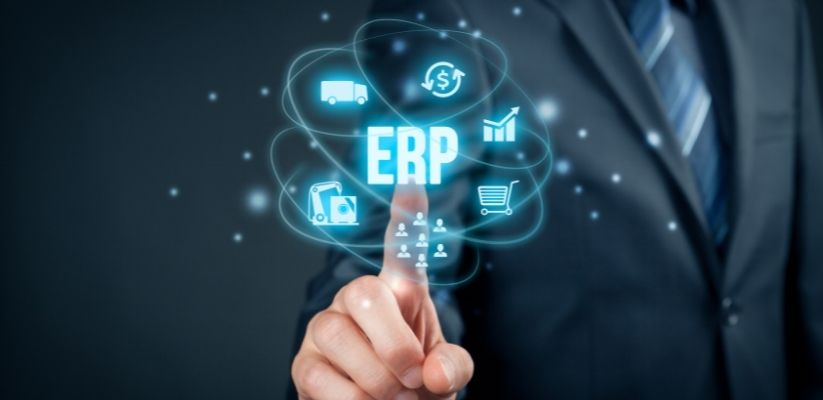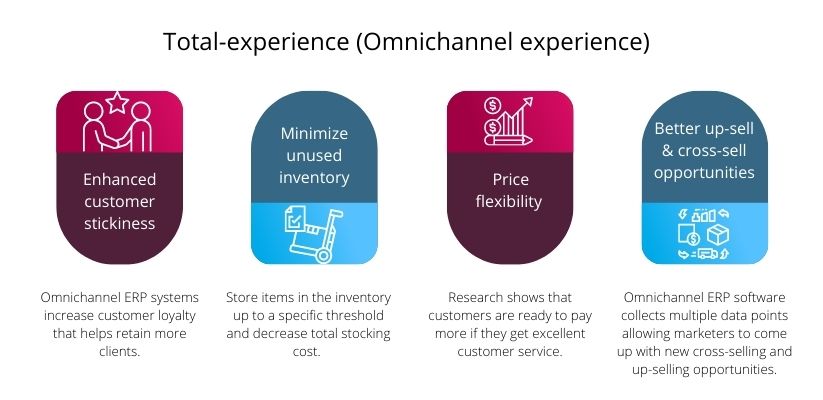Summary: Businesses rely majorly on ERP software when it comes to managing organizational processes like finance and HR, to more front-end functions like marketing and automation. As a result, top ERP systems are evolving every year with newer technologies and additional functionalities to provide a holistic approach for businesses.
New features like smart general ledgers, advanced analytics, omnichannel experience, hyper-automation & immersive workflows, intelligent autonomous things, smart factories & services, machine learning, and artificial intelligence are destined to transform ERP systems forever and make them more useful in the coming future.

This article will shed light on the top 7 ERP trends companies are looking for in 2023 and beyond.
1. Smart GL
Modern Accounting software uses a combination of AI and automation tools to deliver the best quality insights and continuous accounting. With the smart GL functionality integrated with ERP, you can share financial insights with relevant stakeholders and capture and report on transactions in real-time.
A blend of AI and cloud-based architecture enable accounting software to:
- Define machine learning-based ad-hoc workflows.
- Automate dynamic dimension-based accounting.
- Store transaction details only once and generate reports according to different global and internal financial standards.
- Capture data in real-time and create transaction reports in real-time.
- Build intelligence for accounting systems to detect unusual transactions and implement AI-based fraud detection.
- Generate multi-dimensional insights on easy-to-use dashboards with the ability to do predictive analytics.
- Automate and digitalize manual business activities to accelerate international expansion.
- Get 360-degree visibility necessary to manage a multi-dimensional business.
- Eliminate the need to implement robust financial reporting solutions for ad-hoc reporting.
Companies across industries are implementing Smart GLs because of their significant efficiency & productivity gains.
2. BI to Advanced Analytics
Business Intelligence (BI) is a set of technology-driven tools that capture and analyze data and deliver actionable insights to managers helping them make better decisions. Companies will shift their focus from traditional to advanced analytics that use modern tools to discover deeper insights in the coming years. These include text mining, semantic analysis, neural networks, cluster analysis, multivariate analysis, pattern matching, forecasting, graph analysis, complex event processing, and many more.
Advanced analytics allows businesses to:
-
Get enterprise and self-service analytics at the same location.
Access enterprise and self-service analytics using a single platform. In addition, you can use an application lifecycle management toolkit, powerful semantic models, open connectivity framework, and pixel-perfect paginated reports — all in one place.
-
Get comprehensive reports.
Create a single source of truth that provides relevant insights to business stakeholders on a single platform. Get a unified and scalable experience by creating detailed reports about each part of your business through analytical dashboards.
-
Get deeper insights.
Latest developments in AI allow even non-data scientists to build machine learning models and find relevant insights from structured and unstructured data.
-
Convert insights into action.
The main objective of data analytics is to convert data into actionable insights. This will allow you to automate workflows and build business applications conveniently.
-
Access real-time analytics.
Get access to real-time data across multiple platforms, including social media sources and factory sensors that help you make timely decisions based on changing market trends and customer preferences.
3. Total-experience (Omnichannel experience)
Companies across industries are showing greater interest in implementing ERP systems with omnichannel capabilities. Read to find why:
-
Finding the right customer
A recent omnichannel survey by McKinsey reveals that 41% of leaders believe eCommerce to be their most effective sales route compared to in-person (37%) and video (31%). In addition, while most business leaders believe that they will be able to start selling to customers at a large scale in physical stores by the beginning of 2023, only 15% of participants in the survey think in-person sales will be the norm in the future.
-
Minimize unused inventory
“Total-experience” ERP systems share stock data with each business department, ensuring each item in the inventory is sold within a specified period. For example, the “Endless aisle” is an innovative concept used by leading retailers like Sears and Walmart that allows in-store shoppers to browse online inventory. These shoppers can get products delivered to them or pick them up from a nearby store.
-
Price flexibility
According to American Express, customers are ready to pay 17% more for items if they get excellent customer service. It means that businesses can provide the best quality products and services without worrying too much about their investments to ensure the best customer experience.
-
Better up-sell and cross-sell opportunities
Thanks to tons of available data, businesses can get a deeper understanding of their customer’s needs, wants, aspirations and identify which products they are most likely to buy. As a result, they can create new upsell and cross-sell opportunities that help add those extra dollars to the company’s kitty. In addition, they can send messages, emails, notifications, alerts, and recommendations about any new products or services that the company will launch.
Also Read: Top 7 ERP Trends in 2023 — Part 2
STAY UPDATED
Subscribe To Our Newsletter
At Sage Software Solutions (P) Ltd., we are home to world-class ERP software and CRM software that will solidify your business tech support fundamentals and enable you to build a customer-centric organization. You can also write to us at sales@sagesoftware.co.in.
Disclaimer: All the information, views, and opinions expressed in this blog are those of the authors and their respective web sources and in no way reflect the principles, views, or objectives of Sage Software Solutions (P) Ltd.





